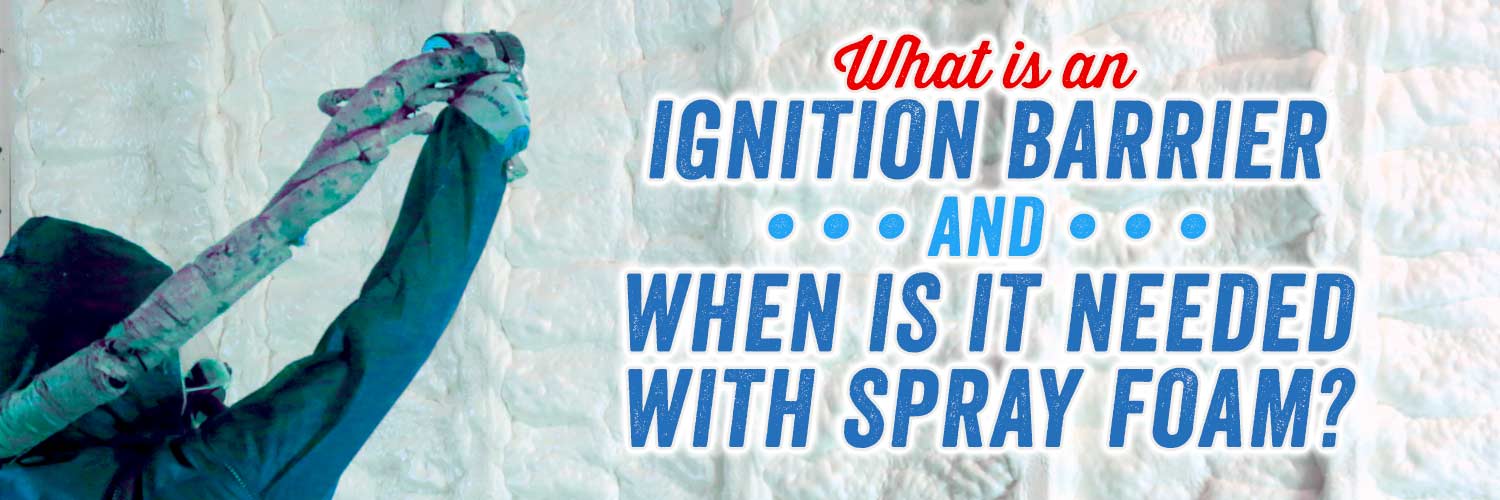What is an Ignition Barrier and When is it Needed with Spray Foam?


When you build your new home or remodel your existing house you want to make sure you’re protected against the worst-case scenario – a fire.
You know you want spray foam insulation in your home, but in your research of the Michigan Insulation Code or the International Residential Code (IRC), you’re likely seeing a lot about ignition barriers. The problem with these codes is they aren’t that easy to understand.
As a foam insulation contractor working in the lower peninsula since 2002, RetroFoam of Michigan not only understands the codes but also understands what needs to be done so your project meets them.
In our continued endeavor to educate homeowners on all things insulation, we are going to explain what a spray foam ignition barrier is and when the foam can be exposed and when it needs to be covered.
What is an Ignition Barrier?
An ignition barrier is designed to stop a perceived hazardous material from igniting.
This means the ignition barrier is intended to provide protection from fire in areas where your spray foam insulation is installed where entry is limited. This includes areas like the attic and crawl space.
While there are concerns about insulation materials and their fire rating, most premium open cell spray foams have an ignition barrier built right into them. So, what does that mean?
This means the spray foam is Class One Fire Rated – the insulation has a smoke development that is less than 450 and a flame spread index that is 25 or less, according to the 2015 Michigan Residential Code R3202.10.1.
RELATED: What is a Thermal Barrier and When is it Needed with Spray Foam?
Can Spray Foam Be Left Exposed?
Spray foam can be left exposed without a thermal barrier only if it has an ignition barrier built-in and only in certain areas of the home.
Even if the spray foam your insulation contractor is using has an ignition barrier, it still needs to be covered by a thermal barrier to separate the insulation from the living space, but in the attic and crawl space, it can be left uncovered.
If the spray foam has no ignition barrier built-in or applied, no matter where it is, it has to be covered by a thermal barrier.
A thermal barrier, like gypsum board, is meant to separate the spray foam from the living space of the home. Less common are specialty paints, DC-315, that can be sprayed onto the foam and is an ignition barrier.
Learn More About Spray Foam Insulation
Before you start your insulation project it’s important to do your research to ensure the material you use meets code while keeping your home comfortable, energy-efficient, and healthy.
If you want to learn more about foam insulation, building codes, energy efficiency, and most importantly comfort, check out the Learning Center on our website.
About Amanda Ringler
Amanda previously has worked as a breaking news and crime reporter, TV news producer, and editor in Flint and Detroit. Throughout her career as a journalist, she has won several awards from The Society of Professional Journalists - Detroit Chapter and the Michigan Press Association. As part of the RetroFoam of Michigan family, Amanda uses her experience as a journalist to write content that will help educate homeowners on the benefits of foam insulation. When Amanda isn’t writing, she’s spending time with her husband and rescued huskies. She also loves knitting, making art, cooking, and hosting dinner and a movie night for friends and family.

.jpg)
